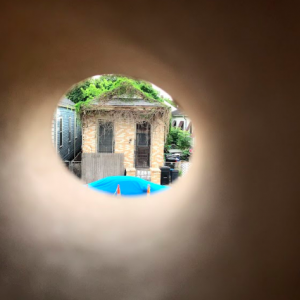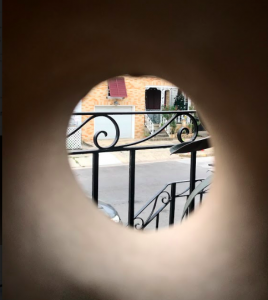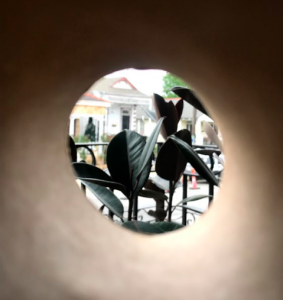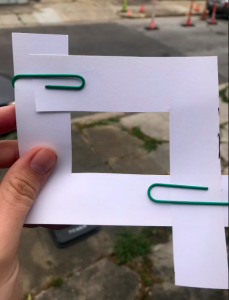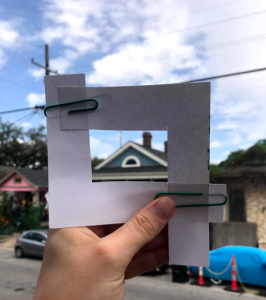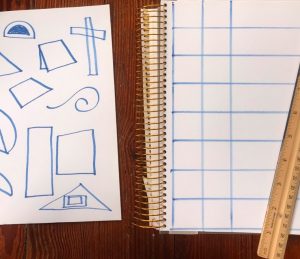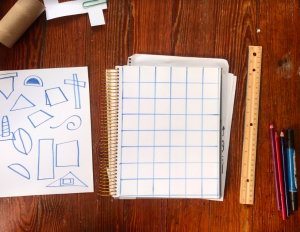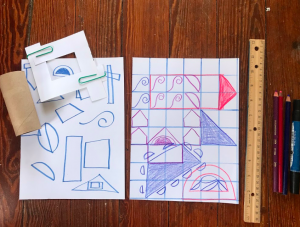Reimagine your neighborhood. Promote thinking about fundamentals elements of social justice: community, empathy, equity, activism, and advocacy by honing your observation of immediate surroundings within your community. Use a found-object viewfinder as a tool for isolating shapes in drawing and utilize shapes as building blocks for creating a geometric composition that represents a vision of positive change.
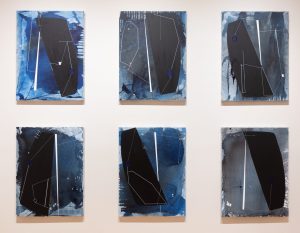
Paintings by Torkwase Dyson in the exhibition Black Compositional Thought| 15 Paintings from the Plantationocene.
Artist Torkwase Dyson is interested in the ways that architecture, water management, and the footprint of the oil and gas industry affects lives. She draws a connection between her abstract paintings and the power structures that shape the political landscape.
Stories of places are tied to the stories of people. Look closely at the details that surround you in your neighborhood, both architectural and natural, as a tool to reflect upon & envision positive change in your neighborhood. Create a geometric composition of the forms you find to embody your vision!
Materials:
- Paper towel roll (viewfinder)
- Alternative viewfinder option: Scissors, paper, tape or paper clips
- Paper
- Drawing utensils
- Ruler or straight edge
Steps:
- Create a viewfinder, a tool artists use to isolate parts of their surroundings to capture in an artwork. Reuse a paper roll to look through with one eye, or make a rectangular viewfinder by combining two L-shaped pieces of paper with tape or paper clips.
2. Look closely! Using your viewfinder, look carefully and slowly at the shapes around you, both architectural and natural. Think about the people & stories that make up this neighborhood as you look.
3. Record shapes you see by drawing them. Fill the page! This is your shape bank.
4. On a separate piece of paper or graph paper, begin your geometric composition by creating a grid to draw on, like a city planner or an architect. Don’t have graph paper? Make your own using a straight edge like a ruler or book. Be sure to space your horizontal and vertical lines evenly.
5. Consider these questions as you plan your design:
What do you love about your neighborhood?
What would you like to change to make your neighborhood a better place?
Arrange the shapes from your shape bank to create a design that represents the positive change you envision. What is your improved neighborhood like?
Share your vision: Give a loved one a tour of your reimagined neighborhood. Next, Create action steps: What are three actions you can take to make your vision a reality?

